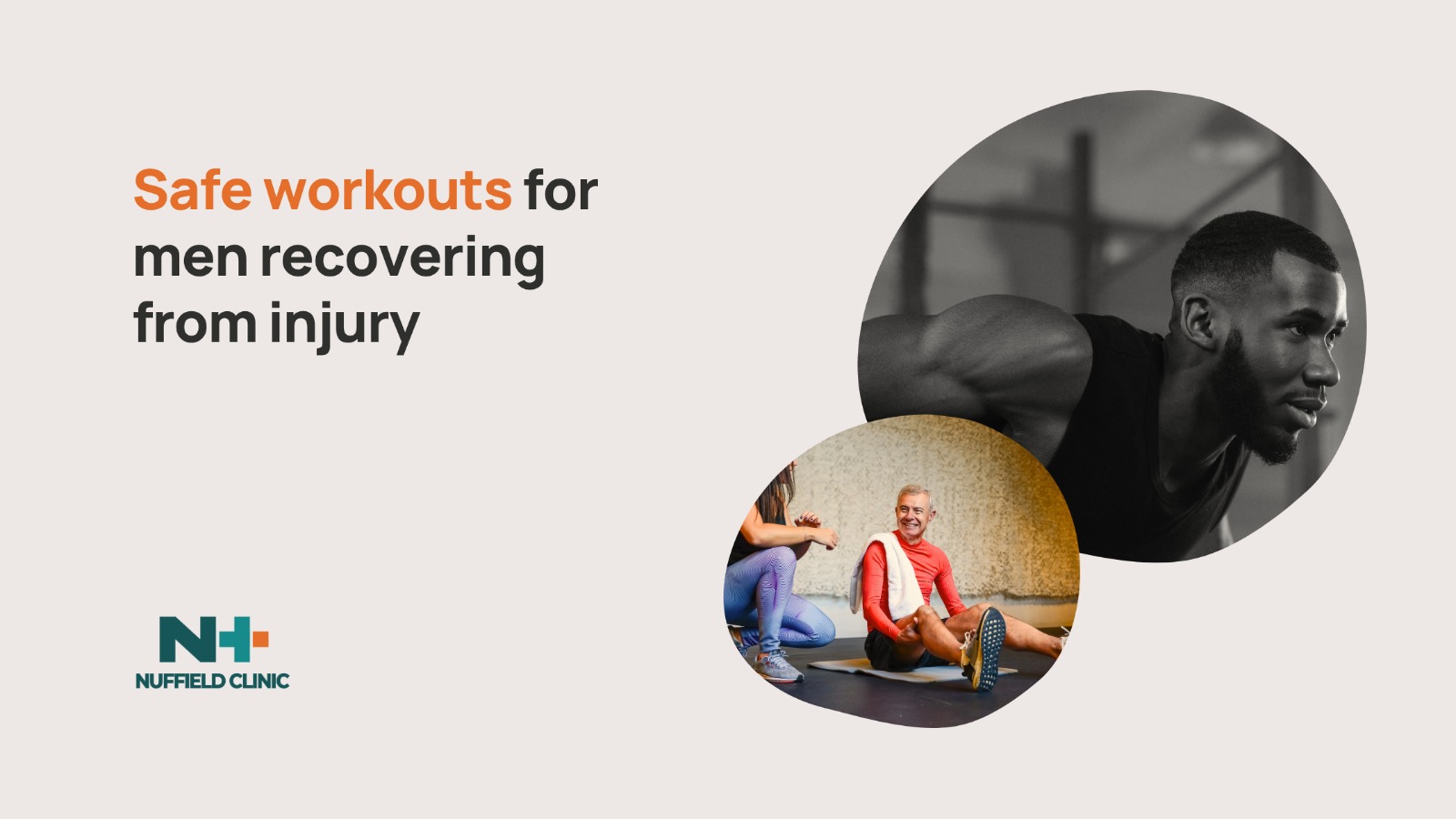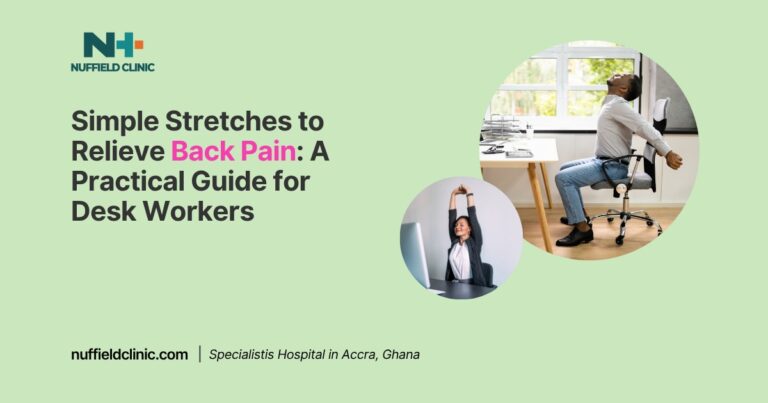Safe workouts for men recovering from injury

What are the best workouts for men recovering from injury? Returning to exercise after an injury requires more than motivation and determination. It demands careful planning, medical guidance, and an honest connection with the body’s signals.
For men in particular, who may be inclined to push through pain or rush recovery, understanding how to train safely after injury is essential for avoiding setbacks and regaining full strength.
See also:
- Post-gym pain or injury: When to see a Physiotherapist
- The Role of Joint Stabilization Devices in Post-Injury Recovery
- Easy tips to prevent and treat sports injuries for everyone
- Expert Guide on how to handle ankle injuries and pain for a faster recovery
Start with diagnosis and professional guidance
Before resuming any form of training, it is essential to get a medical evaluation. Self-treatment can lead to misdiagnosis, delayed healing, or even chronic pain.
A clear diagnosis allows healthcare providers to create a recovery plan that matches the type and severity of injury. A physical therapist is well-positioned to guide this process, offering insights into how the injury occurred, how to correct faulty movement patterns, and how to structure a progression back to full activity.
In many cases, rehabilitation guided by a physiotherapist can shorten recovery time and prevent future issues. Clearance from your doctor is important before resuming workouts, especially if swelling, pain, or stiffness persist.
Progress slowly and in stages
Healing is not linear, and pushing too hard too soon can lead to re-injury. A general principle is to take twice the length of your break to return to pre-injury performance. For example, if you rested for one week, plan to spend two weeks gradually rebuilding.
Start with low-intensity activity and short sessions. As strength and mobility return, increase duration or complexity slowly. Using the 50 percent rule, begin at half your previous intensity, and aim for a 10 to 15 percent increase per week.
Understand that physical setbacks impact the entire body. When one area is injured, others may compensate, leading to new strains. Strength, balance, and flexibility may decline not only at the injury site but also elsewhere. A phased approach that includes rest, light mobility work, progressive strength, and functional training is often the most effective.
Know the difference between discomfort and danger
Listening to the body is a skill. Not all pain is bad, but sharp, localised, or increasing discomfort during or after activity should not be ignored. Before working out, confirm that the injured area feels comfortable during routine tasks. Pain while walking, climbing stairs, or lifting groceries will likely be aggravated by exercise.
Muscle soreness that subsides within a day or two is a normal part of training. Pain that persists or intensifies points to overexertion. It is helpful to track how your body responds after each session. If soreness lingers beyond 48 hours, adjust the next session by reducing load or intensity.
Emotional stress can also affect how the body heals. Injury can lead to frustration or loss of confidence. Recognising this mental strain and getting support when needed can improve overall recovery.
Choose exercises that support healing
Staying active during recovery helps maintain strength, fitness, and mental clarity. The key is selecting exercises that avoid stress on the injured area.
Cross-training is a useful approach. Switching to different activities that use other parts of the body allows continued movement while protecting the healing region. For example, someone with a knee injury can focus on upper body strength or core stability.
Low-impact cardiovascular activities support heart health without straining joints. Swimming and water aerobics are particularly useful due to buoyancy, which reduces pressure on limbs.
Stationary cycling and walking are also good options, depending on the injury. Elliptical machines provide a similar benefit with minimal joint load.
Strength training should begin with bodyweight movements or resistance bands. Exercises such as wall push-ups, glute bridges, or bird dogs can restore strength and coordination. Isometric holds like planks and wall sits engage muscles without moving the injured joint.
Cable machines and light-free weights can be used later in recovery for isolated movements. Avoid heavy lifting or complex barbell movements until strength and control are fully restored.
Flexibility and balance are essential for recovery and future injury prevention. Gentle stretching before and after workouts improves joint range and muscle health. Practices like yoga or Pilates are helpful for improving body awareness and rebuilding coordination.
Core training deserves special attention, especially after back injuries. A strong midsection supports better posture, balance, and movement control. Exercises such as pelvic tilts, bird dogs, and dead bugs are effective starting points.
Build habits that support long-term recovery
Successful rehabilitation involves more than exercise alone. A full return to health includes sleep, nutrition, hydration, and emotional resilience.
Always warm up with 5 to 10 minutes of light aerobic activity, followed by dynamic stretching. After exercise, cool down with static stretches to support flexibility.
Check equipment and make sure it is adjusted correctly before each session. Poor form or unsafe setups increase the risk of new injuries.
Adequate rest is critical for tissue repair. Most adults need 7 to 9 hours of sleep. Active recovery, such as walking, stretching, or foam rolling on rest days, promotes blood flow and healing.
Eating well fuels recovery. A diet rich in protein, complex carbohydrates, and healthy fats supports tissue repair. Staying hydrated helps manage inflammation and improve joint function.
Mental health is often overlooked during recovery. Setbacks can cause disappointment, especially for active individuals. Practising patience, setting small achievable goals, and acknowledging progress—even slow progress—helps maintain motivation.
A helpful framework for injury management is the P.O.L.I.C.E. method:
- Protection of the area through safe movement and bracing if necessary,
- Optimal Loading with gradual and appropriate exercise,
- Ice, Compression, and Elevation to reduce pain and swelling in the early stages.
Returning to exercise after injury is best approached with structure, patience, and guidance. Focus on pain-free movement, rebuilding gradually, and supporting the body with healthy habits. Men can regain strength and function while avoiding re-injury. Working with a physiotherapist provides a safe and informed pathway, helping turn recovery into an opportunity for long-term improvement in fitness and resilience. You can book a consultation today.







